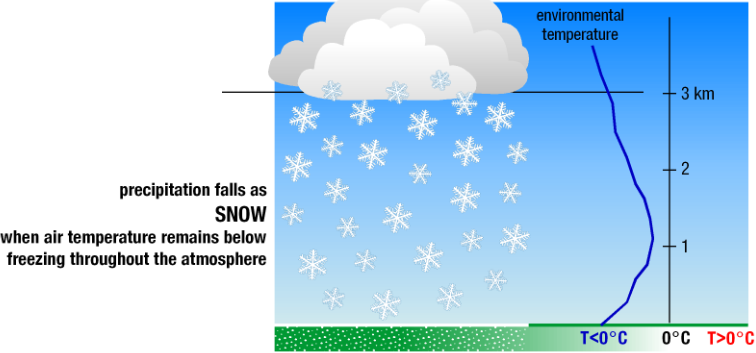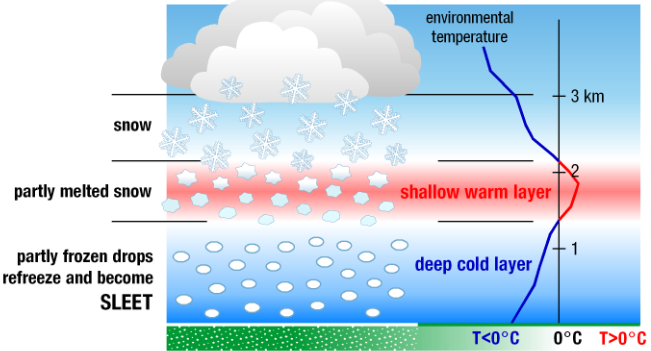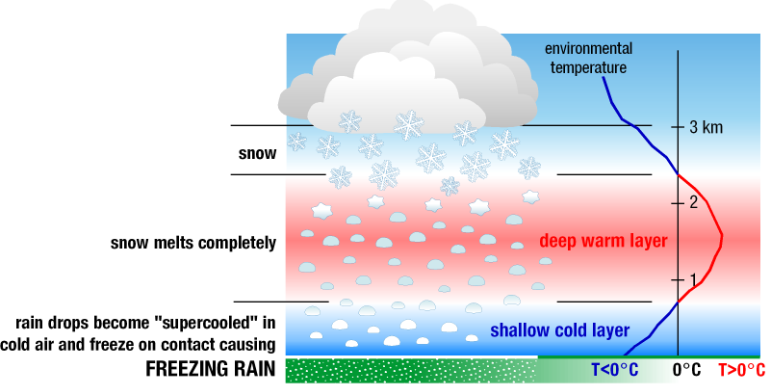Winter Precipitation
December 15, 2024
With the onset of winter comes colder temperatures. And with colder temperatures comes the potential for freezing precipitation. Have you ever wondered how meteorologists know the type and amount of precipitation to forecast in winter? To do this it is necessary to evaluate the temperature profile through a large depth of the atmosphere.

Perhaps the winter precip type that is easiest to understand is snow. In this case, snowflakes form and fall through a column of air that is completely or mostly below freezing. This allows the snowflakes to remain frozen for the entirety of their descent. The result is snowfall occurring at the earth’s surface. Snowfall can occur with surface temperatures a few degrees above 32F but will not produce any accumulation as the snow melts upon contact with a warmer surface.

Sleet, sometimes referred to as ice pellets, is another winter precip type. This type occurs when there is a temperature inversion or when a warmer layer of air is present above a layer of cold air. As ice crystals fall through the layer of air that is above freezing, they can completely or partially melt. If these melted drops fall through a layer of the atmosphere that is below freezing for a sufficient depth, the raindrops will freeze into balls of ice and reach the ground as sleet. Hail, which forms in thunderstorms as a result of strong updrafts, is very simlar to sleet, however, hail can be very large in size, while sleet is typically about the size of a pea.
Freezing rain is perhaps the most misunderstood of all the winter precipitation types. For freezing rain, as ice crystals fall through a deep layer of air above freezing, they melt into rain drops. With only a shallow layer of air at or below freezing near the surface, the drops don’t have time to refreeze. Therefore, they reach the ground as liquid. Upon falling onto any surface at or below freezing, the liquid freezes into an icy glaze. This nearly invisible glaze makes driving on roadways or even walking on sidewalks very hazardous. Freezing rain is also responsible for producing icicles that hang from the roofs of buildings.

Predicting locations of boundaries between precipitation types is challenging due to the many factors involved. Understanding of the science and advancements in technology have been immensely helpful in tackling this difficult task to produce more accurate forecasts. AWIS has created a Members Access area of our site to help clients prepare for winter precipiation, no matter what form falls from the sky. Reach out to our team of meteorologists for more information.
Contact AWIS | About Us